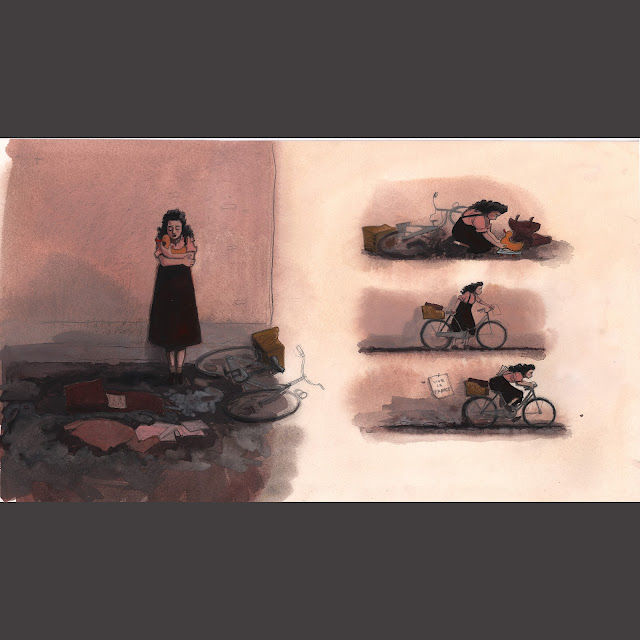This is how Judith Geller begins her own account of the five years from 1939-1945. She lived through the war with several pseudonyms, notably Jacqueline Gauthier, in order to hide her Jewish identity, take care of her family who were in hiding, and resist the Nazi occupation in France. She lost friends and family, including her brother, to the Nazi regime. I can imagine that the words “my name is Judith” carry with them an assertion of authenticity, relief, pride, and defiance.
During those five years, she worked for the French Resistance by riding her bike all over Paris delivering papers, helping secretly relocate children to orphanages and monasteries, forging documents, and painting out anti-Semitic graffiti. But she also had a job. She worked in factories that made munitions and Nazi uniforms, secretly sabotaging machinery. But finding food to feed her family was a constant struggle above all of this, trying to make rations for one person stretch for her whole family. She kept her parents hidden for 4 years and delivered food to her brother and her friend Alfred, who were both in camps on the outskirts of Paris. This is a true heroine.
When I got this manuscript, I just felt like I needed to find out more about who this person was. I started digging and digging and digging in internet corners. I was able to find other people connected to this story. The person who made the duck, a man named Cor, was more well-known in Dutch Resistance circles and was captured and killed during the war.

As a visual storyteller, I am always trying to gather parts of the story that might be seen and not heard. I am not a historian exactly, but I want all the details to be as accurate as possible. At the same time, we don't know exactly what this person did every minute of their life in the 1940s. I want to know my character. I guess this is where imagination and history play tag.
Her coat: Judith describes the coat that she wears as “a big coat which had been sewn in a military cloth and dyed brown.” One story that she tells in her memoir is that she and two friends climbed to the top of Sacre′- Coeur and threw out leaflets that said “Long live France, down with the occupier; France will win.” As they were running away they got caught and were taken by the police. Her big coat got caught in the door of the police car and so the door didn't close properly. As they rounded a corner her friend pushed her out of the door onto the street and she was able to escape. She never saw those friends again, and had to live with the injuries to her legs for the next two years.
The bike: The bike was Judith’s most valuable possession. Jewish people were not allowed to own bikes or ride on trains. In order to protect her family and work for the resistance, Judith needed a fake identity and the bike to get around. She rode many many kilometers every day getting food to the people she loved, as well as doing her many jobs, day and night. According to her memoir, once she rode 70 km in 20 hours. The Resistance and taking care of her family was her all-consuming priority. She slept very little.
“Today you will certainly find it foolish to risk your life. But at that time, everything, every little rebellion was important.”
-Judith Geller
This is the link that I got most of my information from.
Marcus, Judith Geller. “Ceci est mon histoire…” The Family Site. July 1999. http://family-heritage-art.co.il/JudithMarkus/JudithMarkus.htm







































